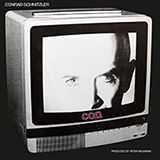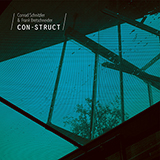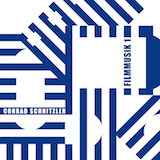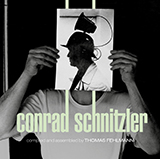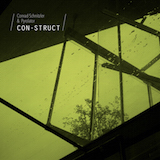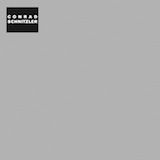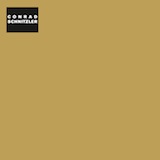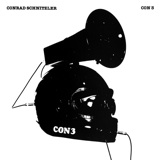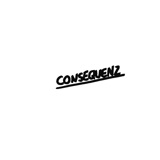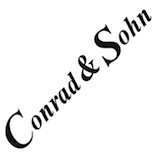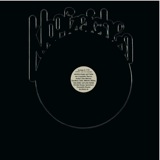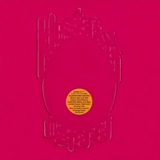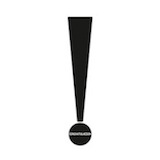CONRAD SCHNITZLER

Conrad Schnitzler (1937–2011), composer and concept artist, is one of the most important representatives of Germany's electronic music avant-garde. A student of Joseph Beuys, he founded Berlin's legendary Zodiak Free Arts Lab, a subculture club, in 1967/68, was a member of Tangerine Dream (together with Klaus Schulze and Edgar Froese) and Kluster (with Dieter Moebius and Hans-Joachim Roedelius) and also released countless solo albums.
There was a particular type of artist who could only have emerged in the legendary early 1970s. Few musicians fit the bill better than Konrad Schnitzler (later Conrad). Revolution, pop art and Fluxus created a climate which engendered unbridled artistic and social development. Radical utopias, excessive experimentation with drugs, ruthless (in a positive way) transgression of aesthetic frontiers were characteristic of the period. The magic words were "subculture", "progressivity" and "avant-gardism". West Berlin, with its unique political status, was a crucible of turbulence. Founded in 1968, the Zodiak Free Arts Lab was the ultimate point of convergence for subculture in West Berlin, with Konrad Schnitzler the driving force behind it. It was also here that Tangerine Dream and Kluster first met up to perform in public.
AUF DEM SCHWARZEN KANAL 12"
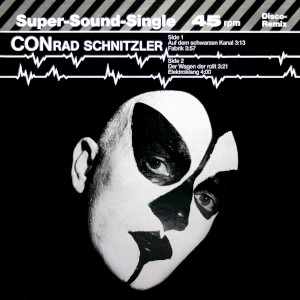
"Auf dem schwarzen Kanal" is one of the most outstanding, most sought-after releases in Conrad Schnitzler's extensive catalogue. It was the only Schnitzler record to appear on a major label and saw him flirting with the experimental new wave sound that was emerging in 1980, particularly on the title track. Nevertheless, it still managed to sound idiosyncratically unlike any other music around at the time. Recorded with Wolfgang Seidel at Peter Baumann's Paragon Studio in Berlin, the four tracks take us on a caustic, dissonant mutant disco trip which has lost none of its fascination in the years since. It gives us at Bureau B great pleasure to reissue this long lost work!
OUT AUGUST 28, 2020
Download the info sheet (PDF): english / germanCON

Independence. If there's a common thread running through the life of Conrad Schnitzler (1937 – 2011), it is his unfailing commitment to independence, something he learned at an early age. In the turmoil of war, his mother was evacuated to Austria, so he and his younger brother made their way through the bombed out ruins of Germany's industrial Ruhrgebiet to get there. He attended an Austrian village school with children of all ages before returning to Düsseldorf where he completed an apprenticeship as a mechanical engineer. This revealed another side to his character: planning and precision were as much a part of him as the desire for independence. The latter came under threat in 1956 when West Germany reintroduced military service, with conscientious objection an unrealistic option in the Cold War climate. A few occupations were exempt from conscription, miners for example. Signing up for the merchant navy presented another loophole. Conditions on board were so unappealing that such an incentive was deemed necessary. Whilst on shore leave in Düsseldorf, Schnitzler heard about a professor at the School of Art (Kunstschule) who also accepted students into his class without high school diplomas. Conrad Schnitzler became one of them.
The spirit of a fundamental new beginning bonded this generation of artists together, with Karlheinz Stockhausen and Gottfried Michael Koenig the most radical proponents. Perhaps it was due to the fact that music had been so corrupted under National Socialist rule, from classical to the Schlager variety. Schnitzler was fascinated by the new sounds he heard on the radio in the evenings. To his ears, they connected the struggle for independence to the planning and precision he had learned as a mechanical engineer. At the same time, he understood that music like this was only possible within an institutional framework to which he had no access. So he set about creating his own framework.
Schnitzler bought his first synthesizer in the early 1970s – a considerable investment at the time. The introduction of the compact cassette had liberated duplication and distribution from the realm of the record company, but Schnitzler also recognized the creative potential of the medium, beyond its practical functions. He built a "cassette organ" out of 12 cassette recorders and two cases for his musical collages. Towards the end of the decade, he could be found on the Kurfürstendamm, West Berlin's premier boulevard, cassette recorders slung over his shoulders as his music boomed out of battery-powered loudspeakers. He sold the cassettes on the spot. It doesn't get more independent than that.
How did he find his way into a commercial studio? Buoyed by the success of Tangerine Dream, Peter Baumann, Schnitzler's successor in the band, established the Paragon Studio. Schnitzler had left after their first LP in the belief that the creative potential of the group had reached its limit, but their friendship endured. Baumann made use of downtime in the studio to pursue his own musical experiments. And then Conrad Schnitzler appeared at the door with a small Korg synthesizer, a sequencer and his EMS Synthi (a portable model in an attaché case), having transported the whole lot on his delivery bicycle. Disciplined artisan that he was, he soon had something decent to show for his efforts. Something, indeed, which could be pressed on vinyl for a wider audience. It was clear in Schnitzler's mind that he needed to leave the studio at least some commercially viable material in return for the chance to work there. Hey, it could even be fun. Con 3. proves as much. The last record to be completed at Paragon reveals Schnitzler's light- hearted rapprochement with German New Wave (Neue Deutsche Welle). However, when record companies rolled out their standard contracts, including the usual clauses obliging the artist to attend interviews and participate in television shows, Schnitzler's independent spirit rebelled. Those contracts remained unsigned.
The Paragon Studio era, with sound engineer Will Roper, whose work with Schnitzler gave him the opportunity to demonstrate his skills in tape manipulation, splicing, editing and looping, came to an end when the studio was sold and Peter Baumann moved to the USA.
OUT AUGUST 7, 2020
Download the info sheet (PDF): in English / in GermanDownload press kit here
Con-Struct Series
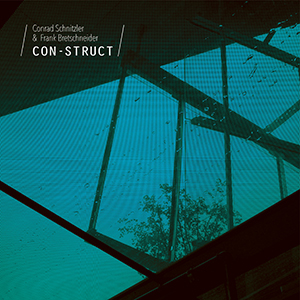
CON-STRUCT
Conrad Schnitzler / Frank Bretschneider
Bretschneider on his con-struction:
I read the name Conrad Schnitzler for the first time in the arti- cle about Tangerine Dream in the Rowohlt Rock Lexicon from 1973 (back then, at 17 in the GDR, an indispensable guide). The first time I heard his music was only in 1980, when his wave track "Auf dem Schwarzen Kanal" was played on the ra- dio, an RCA 12" Super Sound Single in disco remix. Then the man was gone and stayed under the radar again, in spite of his almost inflationary number of releases. Maybe his mate- rial was too obscure or his approach too radical to be noticed by the general public. It wasn't until 1988 that I heard from Schnitzler again, a tape on Jörg Thomasius' East Berlin Kröten Kassetten label. And again almost 10 years later his Plate Lunch CDs "Rot" and "00/106". But it was all too rough and raw for me, both in terms of sound and organization, kind of mechanically and not really cool. Only after I heard Wolfgang Seidel at the NBI around 2002 with one of his tape concerts, I came slowly closer.
Schnitzler's early role as co-founder of two influential bands is one reason for the ongoing reception. Another is his con- sequence as an artist. "I'm not interested in having publicity or a public feedback" he declared in an 1996 interview. It remains an open question whether one has to completely refuse to do so. But I was always fascinated by this almost extinct way of being an artist in its full independence. Just as I feel connected, as a self-taught person and as someone who prefers to look forward instead of looking back: "I don't want nostalgia." After all it was Jens Strüver who inspired me to work with Conrad Schnitzer's material.
I had the idea of flowing music in which patterns develop, shift, dissolve and finally reorganize. A modular system seemed the most suitable to connect Schnitzler's world with my own by triggering and modulating his sounds via a sampling module and supplementing them with my own. Perhaps I have not always succeeded in merging both worlds congenially, sometimes they orbit, sometimes they collide, but they never stand still. As Conrad Schnitzler says in his "Context" manifesto: "The sounds don't come to stay."
Read the info sheet (PDF) in English / Deutsch
Download press kit here
FILMMUSIK 2

In the year 1975 Conrad Schnitzler recorded various pieces of music to accompany films which had yet to be made. Fittingly, he labelled this collection of songs "Filmmusik". The music is extraordinarily accessible for Schnitzler: hypnotic bass lines, stoic drum rhythms, dark drones, crystalline shards of melody. "Filmmusik 2" features five tracks from the 1975 recordings plus one 23 minute track called "Lichtpunkte und schwarze Zeichen", recorded in 1978 for Schnitzler's film project of the same name.
OUT FEBRUARY 10, 2017
Download the info sheet (PDF): in English / in GermanDownload press kit here
KOLLEKTION 5
compiled by THOMAS FEHLMANN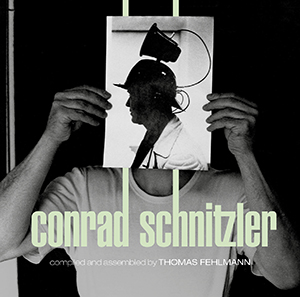 About the curator of this Kollektion: Thomas Fehlmann rose to prominence in the seminal band Palais Schaumburgwith Holger Hiller. Their debut album in 1981 was a milestone inGerman post-punk music. In 1988 Fehlmann founded the Teutonic Beats label and in 1990 he became a member of The Orb. He has played an important role in Berlin's electronic and club scenes ever since, as a musician, producer, remixer and DJ.
About the curator of this Kollektion: Thomas Fehlmann rose to prominence in the seminal band Palais Schaumburgwith Holger Hiller. Their debut album in 1981 was a milestone inGerman post-punk music. In 1988 Fehlmann founded the Teutonic Beats label and in 1990 he became a member of The Orb. He has played an important role in Berlin's electronic and club scenes ever since, as a musician, producer, remixer and DJ.Thomas Fehlmann on this Kollektion:
So the question is, are we talking about a "mix" or what is the most accurate way to define this kind of compilation? If "mix" overreaches slightly, the fact remains that I have strung together various pieces from Conrad Schnitzler’s white period - the CON series - in a seamless arrangement which creates its own state of dramatic tension. The tracks retain their original form and tempo. This is not a study in montage. I have restricted myself to picking the right moment to move from one piece to the next, cross-fading. Okay, I did edit one track. Mixing implies a deeper incursion into the source material, dismantling and reconstructing it in new combinations. I would have found that too crude a method when each individual piece carries its own unequivocal message. The sound is the sound of Conrad Schnitzler.
I was looking for a form which would condense Conrad Schnitzle’s versatility, his inventiveness and wit into a single journey. The new running order adds a certain friction to the aura of each as new connections are made. My choices were musical, not chronological, bathing these works from the early 1980s in new sensuous light. It is quite remarkable to see how intensely the sparks still fly. Preparing this collection closes an elementary circle in my life, without which I may have followed a completely different path.
Read the info sheet (PDF) in English
More Information here
BUREAU B REISSUES
SOLO(Rot)
Download the info sheet (PDF): English / German
(Blau)
Download the info sheet (PDF): English / German
Con 3
Download the info sheet (PDF): English / German
Consequenz
Download the info sheet (PDF): English / German
Conrad & Sohn
Download the info sheet (PDF): English / German
Contempora
Download the info sheet (PDF): English / German
(Gold)
Download the info sheet (PDF): English / German
(Silber)
Download the info sheet (PDF): English / German
Congratulacion
Download the info sheet (PDF): English / German
(Gelb)
Download the info sheet (PDF): English / German
(Grün)
Download the info sheet (PDF): English / German
WITH KLUSTER
Klopfzeichen
Download the info sheet (PDF): English / German
Zwei Osterei
Download the info sheet (PDF): English / German
Schwarz (Eruption)
Download the info sheet (PDF): English / German
